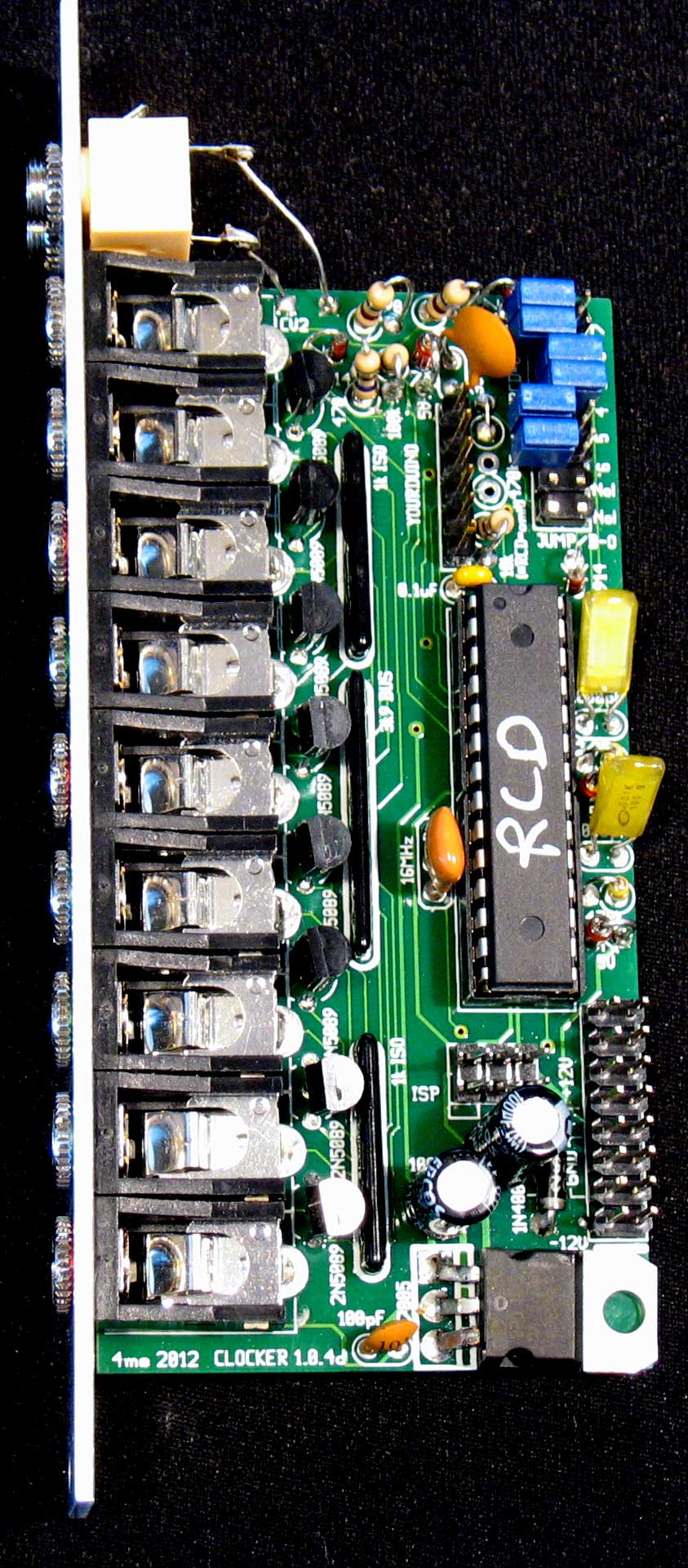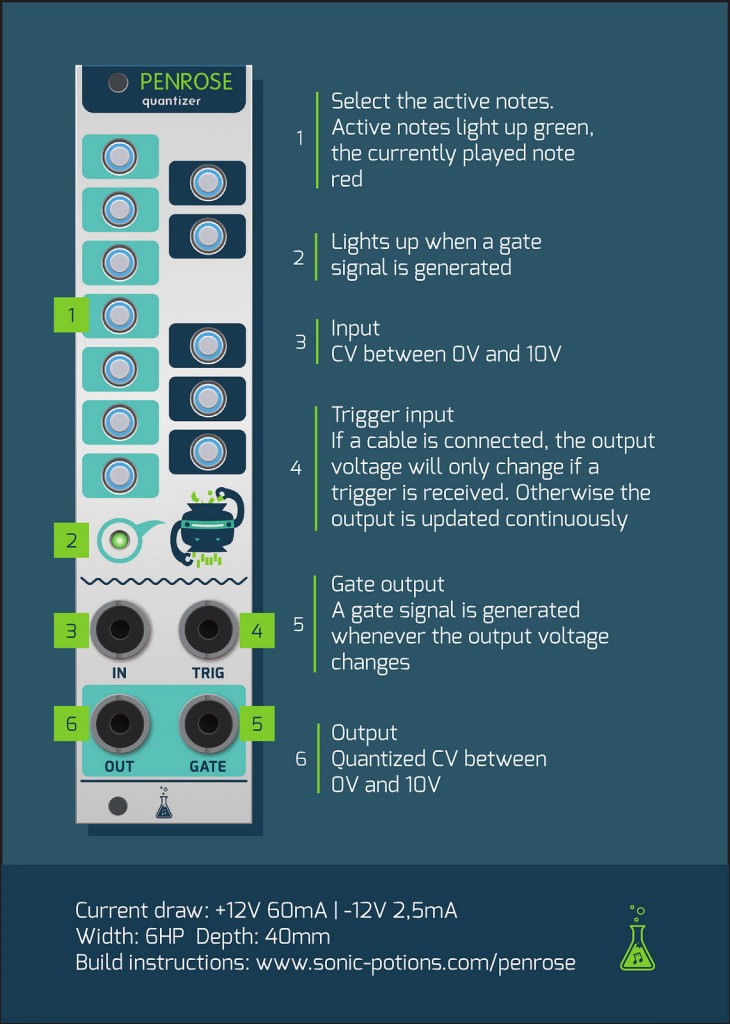HOW DOES THE SAMPLESLICER WORK?
What does the Sampleslicer do?
The Sampleslicer is a real-time monophonic sampler, including a 16 step voltage-controlled sequencer.The incoming sound is chopped up automatically into 16 parts by the incoming clock signal and spread out over the16 steps in the internal sequencer.
How long can it sample?
The length of the recorded sample is set by a clock-divider, so the recording time is always linked to the incoming clock signal. You can choose between time divisions of 1, ½, ⅓, ¼ and ⅛.
If the divider is set to 1 the total sample time is equal to 16 incoming clock-pulses.
If set to ½ the sample length is equal to 8 incoming clock-pulses, spread over 16 slices (so half the time). It will produce even more glitchy fun when set to ⅓, as it will spread 6 steps over 16 slices. The maximum sample time is about 15 seconds and the minimum sample time is a fraction of a second for granular noises.
How does the sequencer work?
Inside the Sampleslicer there is a 16-step voltage controlled sequencer to play back the sound. Every step is dedicated to a 16th part of the recorded sound inside memory. When the 16 steps are full the sequencer starts playing from the chosen start point till the chosen amount of steps are played. This can be in one-shot mode or in loop mode for infinite looping.
The start point and play length is determined by potentiometers or CV input.
Last but not least the individual slices can be played back as notes via CV from a sequencer or keyboard, by setting the start point in V/oct mode and play length to 1.
How does the pitch work?
There is a control to pitch the slices up or down. The pitch control affects the overall pitch of the recorded material. It can be controlled via CV.
Why only realtime sampling?
Our vision on the modular world is that you get most fun out of realtime created sounds. Out of principle we chose to make this module without a memory card reader.
What about the soundquality?
The sample rate is 12bit, just like the good old sampling madness days. A lovely sound with a slightly raw character without being gritty. For comparison: CD digital sound quality is 16bit, gameboys are 8bit, the E-mu Emulator is 8bit, E-mu Emax is 12bit, the MPC60 is 12bit, the AKAI S612 is 12bit, the AKAI S900 is 12bit, Oberheim DPX1 is 12bit and the EMU sp-1200 is 12bit too…
In order to maximize sound quality and creative usage possibilities, we choose not to place an anti-aliasing filter in the audio output path. The digital-to-analog conversion process already gives a clean and rounded sound, and filtering would tend to take away some brightness and aliasing can give some extra to your sound.
It is designed to be part of a modular system so we leave it to you whether you like to patch the input/output through a filter or not.
What is aliasing?
If you experience noise in combination with some audio sources (but not all), then most probably you use digital audio sources with a lot of sharp corners in the audio. This causes aliasing, which might sound as noise. If this is the case with your setup, simply put a lowpass filter in front, slightly turn it on and all aliasing noise is gone. For example, if you use audio created with PWM, the aliasing sounds terribly noisy. This can be explained by the PWM being only “high” or “low”. (The PWM I talk about is not the PWM on your analog VCO but digital created pseudo analog voltages by making a 5V pulse wider or smaller.) If you send digitally created audio through a lowpass filter the corners will be rounded off, the highest frequencies will be filtered and the aliasing/noise will be gone.
Analog audio will sound clean unfiltered and will have nice smooth aliasing.
Read more about aliasing on Wikipedia.
So, no, it is not 24bit as we know in the mastering studio’s. Instead, it will remind you of the good old “hip hop” sounds from the 80’s ![🙂]() and it’s lovely! In the end it’s an instrument by itself not a mastering tool.
and it’s lovely! In the end it’s an instrument by itself not a mastering tool.
Be creative and try the module in any way you can think of! Feel free to share your results. I am excited to see what you come up with!
Technical info
width: 16HP
power consumption
+12V: 94.0mA
-12V: 17.5mA
depth (including power cable): 25mm

 As seen on Warps and Frames.
As seen on Warps and Frames.








 and it’s lovely! In the end it’s an instrument by itself not a mastering tool.
and it’s lovely! In the end it’s an instrument by itself not a mastering tool.






